Disclaimer: We are serious about content integrity and staying true to our readers. Thus, you can be assured that any article you read across our website is free of bias and is not produced by AI-platforms. Also, this post contains a few affiliate links. If you click on them to make a purchase, we may earn a small commission at no extra cost to you. Read about our editorial policies.
The magical sight of marine creatures and colorful coral reefs in azure waters makes scuba diving one of the most exhilarating activities. If you’re looking to experience this life-transforming adventure, India boasts an array of stunning dive sites. However, the best place in the country for scuba diving is the Andaman & Nicobar Islands, due to its crystal-clear waters!
It was at Nemo Reef in Havelock Island where I dived for the very first time. Since then, there’s been no stopping me. Out of my 12 dives so far around the world, 2 have been in the Andamans.
In this article, I will be taking you through the nitty-gritty of scuba diving in the Andaman Islands to help you have a safe yet unforgettable diving experience. Let’s get started?
Before that, you can also check out our complete Andaman travel guide to explore the islands within a short time.
Contents
Scuba Diving For Non-Swimmers And Swimmers
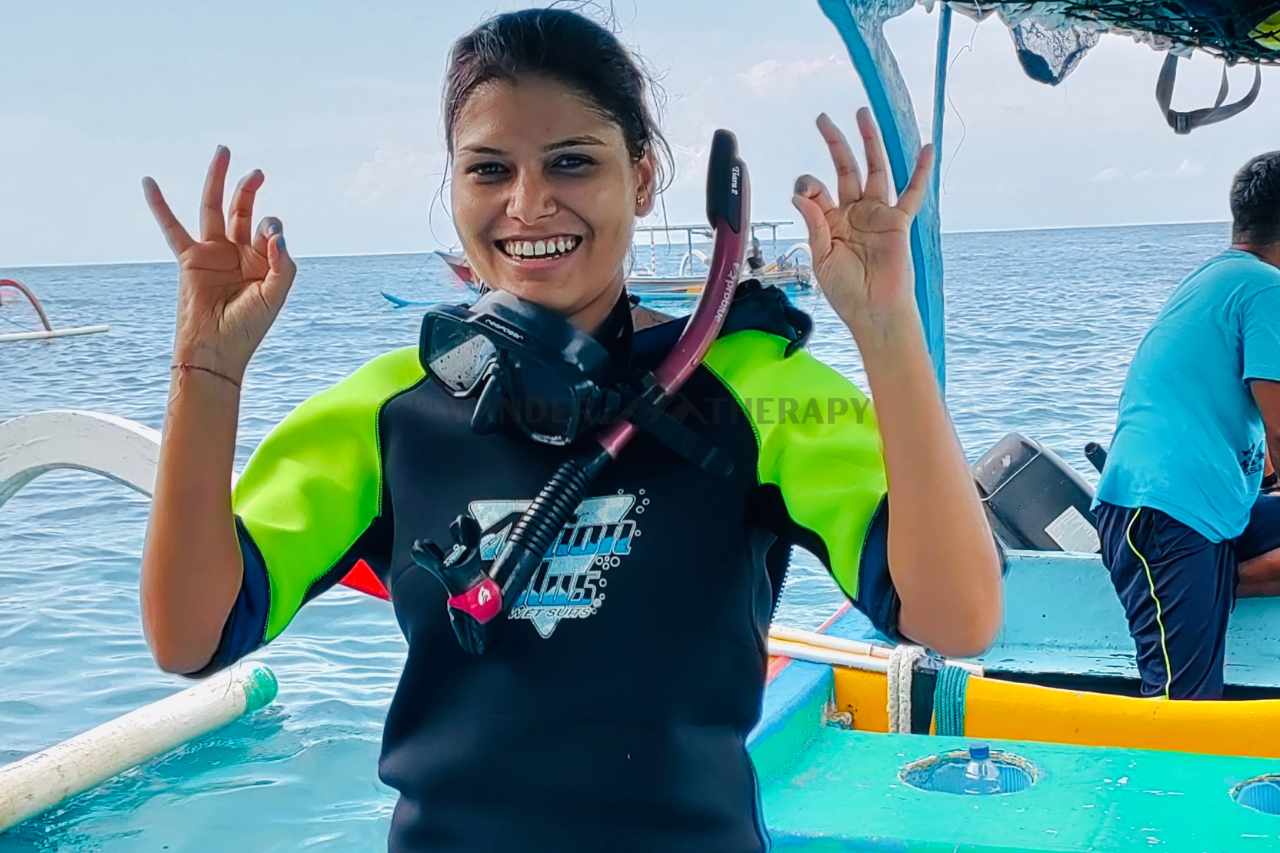
First things first, let’s address the most important question – Can I scuba dive if I don’t know how to swim?
This is the major worry of any beginner, especially for someone who can’t swim. But let me assure you that swimming skills don’t matter during scuba diving. You just need to glide.
Scuba Diving for Non-Swimmers
You may initially be nervous. But once you descend into the blue waters, you will feel a sense of calm and tranquility that you have never experienced before. The vibrant coral reefs and fishes will amaze you, and weightlessness will give you a sense of freedom. To experience all this, you just need proper training and equipment.
For non-swimmers, it is important to start with a basic scuba diving course to learn the necessary skills and safety procedures. This will usually involve classroom sessions, pool training, and open-water dives with a certified instructor. The instructor will teach you how to use the scuba equipment, how to breathe underwater, and how to communicate with hand signals.
Book your scuba diving activity with a professional guide curated especially for beginners!
Scuba Diving for Swimmers
For swimmers, scuba diving may come more naturally as they are already comfortable in the water. However, it is still important to take a scuba diving course to learn the proper techniques and safety procedures. Even strong swimmers may not be used to breathing underwater or using scuba equipment. So it is crucial to have proper training.
One advantage that swimmers may have is their ability to hold their breath for longer periods of time. This can be helpful when diving to deeper depths where air consumption may increase. However, it is important to still follow the standard safety procedures and never push your limits.
Did You Know?
There are strict safety protocols in place for diving operations, including mandatory pre-dive checks, safety briefings, and maximum dive depths in the Andaman Islands. Divers are also required to have proper certification (if required) and medical clearance before participating in any diving activities.
Best Time For Scuba Diving In The Andaman Islands
The best time for scuba diving in the Andaman Islands is from October to May. During this time, the weather is pleasant with clear skies and calm seas, providing ideal conditions for diving. The water temperature is also warm, ranging from 28-30 degrees Celsius, making it comfortable for divers to explore the underwater world. Additionally, the visibility during these months is at its best, ranging from 15-40 meters, allowing divers to witness the vibrant marine life and colorful coral reefs in all their glory.
TWT Tip: The monsoon season, which runs from June to September, is not recommended for scuba diving due to rough seas, poor visibility, and increased chances of storms.
Top 15 Places For Scuba Diving In The Andaman Islands
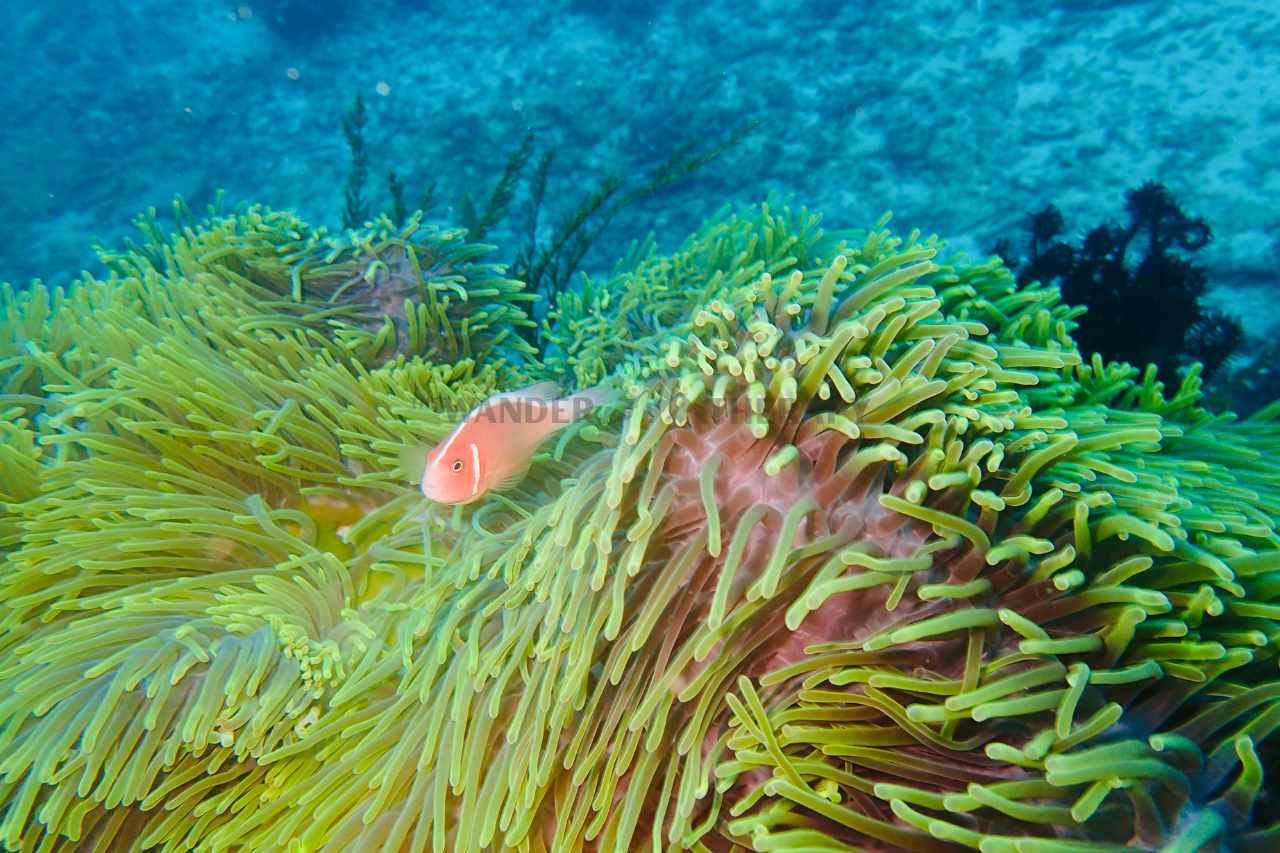
- Red Pillar
Located on the northeastern coast of Havelock Island, this dive site is part of a shallow reef that is in continuity with the fringing reef. It offers a perfect harmony of vivid fish and both soft and hard corals, making it a must-visit destination. In its clear waters, you can spot a variety of colorful marine life such as clownfish, tigerfish, and angelfish.
- The Slope
It is widely recognized as one of the greatest shallow dive destinations in the Andamans. Its unique topography is a major draw for divers. The site resembles an amphitheater, with sandy ridges arranged in a cascading fashion, creating a sloping effect. These ridges are interspersed with vibrant coral formations, adding to the beauty of the site.
The Slope offers a vast diving area, and one trip may not be enough to explore it fully. However, even a partial dive can reveal an abundance of marine life. Echinoderms such as sea stars, cushion stars, brittle stars, and sea cucumbers, as well as molluscs, crustaceans, and a variety of fish, including damselfish, fusiliers, and cardinalfish, can be spotted in this spectacular dive site.
Looking for accommodations? Reserve your stay at one of the top hotels in Andaman Islands!
- Inchkeith Wreck
This diving site is a popular spot for novice divers in the Andaman Islands. The wreck is home to scorpionfish, cleaner shrimp, and soft corals, making it a colorful and unique sight. Despite its low visibility, it is highly sought-after by scuba divers who are drawn to its air of mystery. One of the most notable features of the wreck is the upright propeller at the stern, which can be seen in 60 feet of water. Divers may also encounter great barracudas lurking in the shadows.
- Broken Ledge
This dive site, discovered in 2010, offers ideal conditions for scuba divers of all experience levels due to its shallow depths and sheltered environment. The site is characterized by low-lying rocky outcrops that resemble a broken ledge, rising from the bottom at a depth of approximately 24 meters.
The ledge is surrounded by sandy areas and is home to a diverse range of reef fish, including Moorish idols, lionfish, Napoleon wrasse, and snappers. It is also inhabited by other marine creatures such as turtles, longfin bannerfish, and marbled groupers. Along with these, larger fish species such as white-tip reef sharks, marbled rays, manta rays, dogtooth, and yellowfin tunas can also be spotted here.
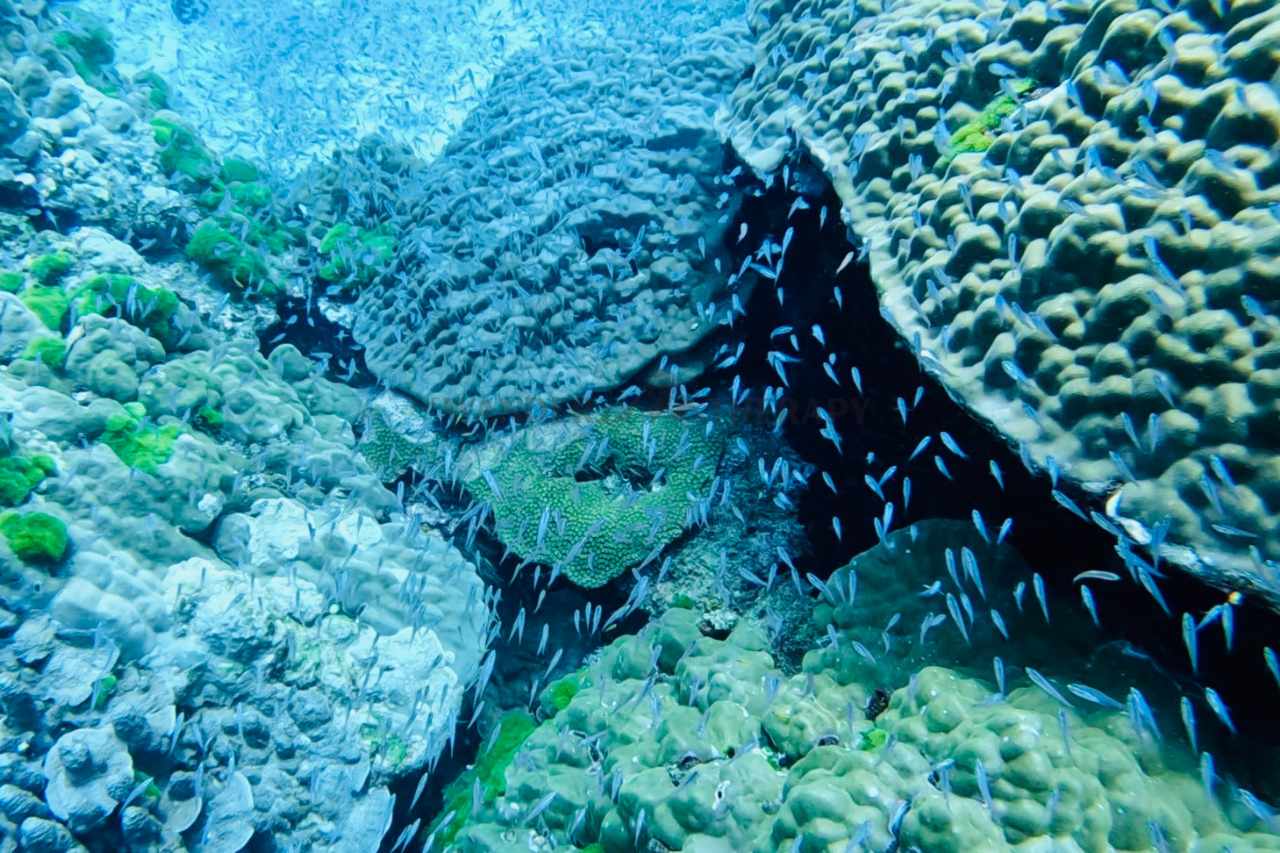
- Jackson’s Bar
A horizontal rocky reef, it is the perfect spot for observing magnificent marine creatures such as manta rays, eagle rays, and white-tip reef sharks. This unique dive site takes the form of a shelf, starting at 20 meters and gradually sloping down towards the sandy area. At its deepest point, it reaches 30 meters before meeting the sandy bottom, where a large strip of rock juts out.
This dive site is known for its abundance of barrel sponges and stunning soft corals. Due to its location and the strong currents that flow over it, Jackson’s Bar is home to a diverse population of large pelagic fish.
- Dixon’s Pinnacle
It is characterized by three immense rock formations that rise from a dark seabed. This location is a bustling hub, renowned for its diverse and vibrant underwater ecosystem. At the peak of the pinnacles, there is a constant flurry of activity, as it serves as a popular cleaning station for colossal groupers.
One can also observe schools of barracuda eagerly awaiting their turn. White-tip reef sharks are a common sight, along with other inhabitants such as the magnificent Napoleon wrasse, titan triggerfish, moray eels, shrimps, tunas, green turtles, red-toothed triggerfish, manta rays, trevally, lionfish, stingrays, and batfish.
- Barracuda City
The ultimate diving destination for beginners, Barracuda City in Havelock Island boasts an abundance of coral belts featuring a perfect mix of soft and hard corals. Its diverse ecosystem is home to a plethora of colorful and lively fish species. If you are lucky, then you may even catch a glimpse of wandering sea turtles as you explore the vibrant corals.
- Neil Island
This island is known for its laid-back atmosphere, diverse range of flora and fauna, and pristine coral reefs, all of which contribute to its irresistible charm. One of the major highlights of scuba diving in Neil Island is the perfect combination of shallow depths and moderate water currents, making it an ideal destination for novice divers.
Popular diving spots such as Busy Burro, Junctions, Margarita, and Rocky’s are frequented by visitors for their vibrant marine life and stunning underwater landscapes.
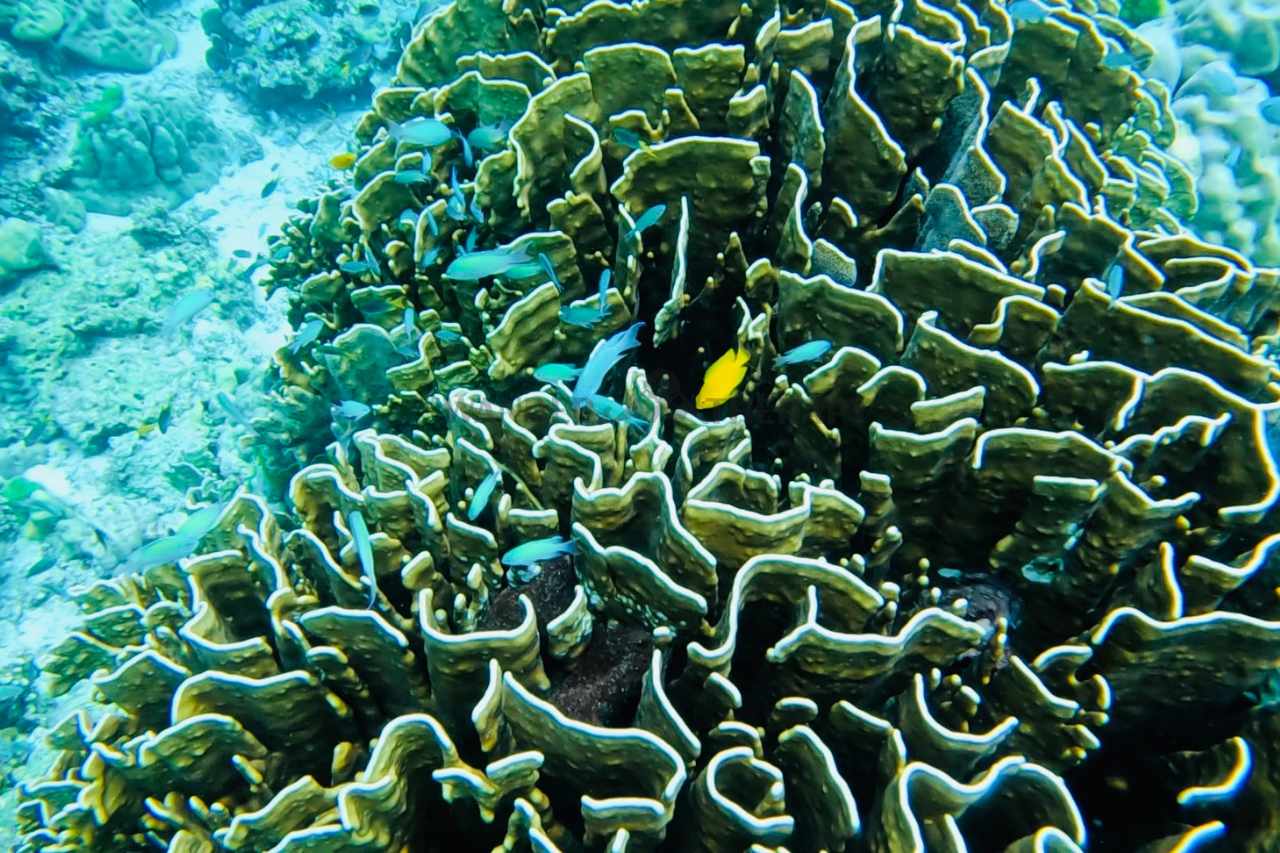
- Barren Island
Contrary to its name, Barren Island boasts a wealth of natural wonders. Not only is it the sole active volcano in South Asia, but it also offers a breathtaking array of marine life and crystal-clear waters.
Embarking on a scuba diving adventure in Barren Island means encountering magnificent manta rays, delicate garden eels, stunning basalt formations, and vibrant coral gardens. And if that’s not enough, there are also barracuda fish and dogtooth tuna you might end up encountering.
- North Bay Island
The island boasts spectacular waters, captivating coral reefs, and breathtaking scenery that will surely leave you amazed. The marine life is endless, with mesmerizing soft corals like sea fans, mushroom corals, and sea anemones. And for those who are not confident swimmers, shore diving on North Bay Island is also an option.
- Mahatma Gandhi Marine National Park, Wandoor
This national park is an exclusive destination for divers. When you are in Port Blair, make sure to include a diving excursion here in your itinerary. The park boasts a breathtaking natural beauty, with a vibrant display of sea flowers and over 50 varieties of coral such as Fungia, Pocillopora, Acropora, and Leptoseris.
Additionally, a diverse range of aquatic species can be spotted here, including Clownfish, Surgeonfish, Whitetip Shark, Parrot Shark, Butterflyfish, and Angelfish.
- Mahatma Gandhi Marine National Park, Jolly Buoy
Jolly Buoy is a true paradise for marine life enthusiasts. Located in the Mahatma Gandhi Marine National Park, it is a tranquil and isolated island. This hidden gem is a haven for scuba divers, offering an unparalleled experience. The crystal-clear waters surrounding the island are home to a vibrant and captivating underwater world.
- Corruption Rock
The Corruption Rock in South Andaman is a renowned diving spot, consisting of a massive rock that descends 98 feet. Its top section protrudes from the water and it is situated at the mouth of a channel. Due to its protective environment, the rock attracts a diverse range of sea life, including barracudas, eagle rays, giant trevally, giant groupers, blackjacks, humphead parrotfish, and green sea turtles.
The rock face is covered in corals, adding to its beauty. However, the currents in this area are strong, making it suitable for deep dives, photo trips, and activities such as fish identification or underwater naturalist courses.
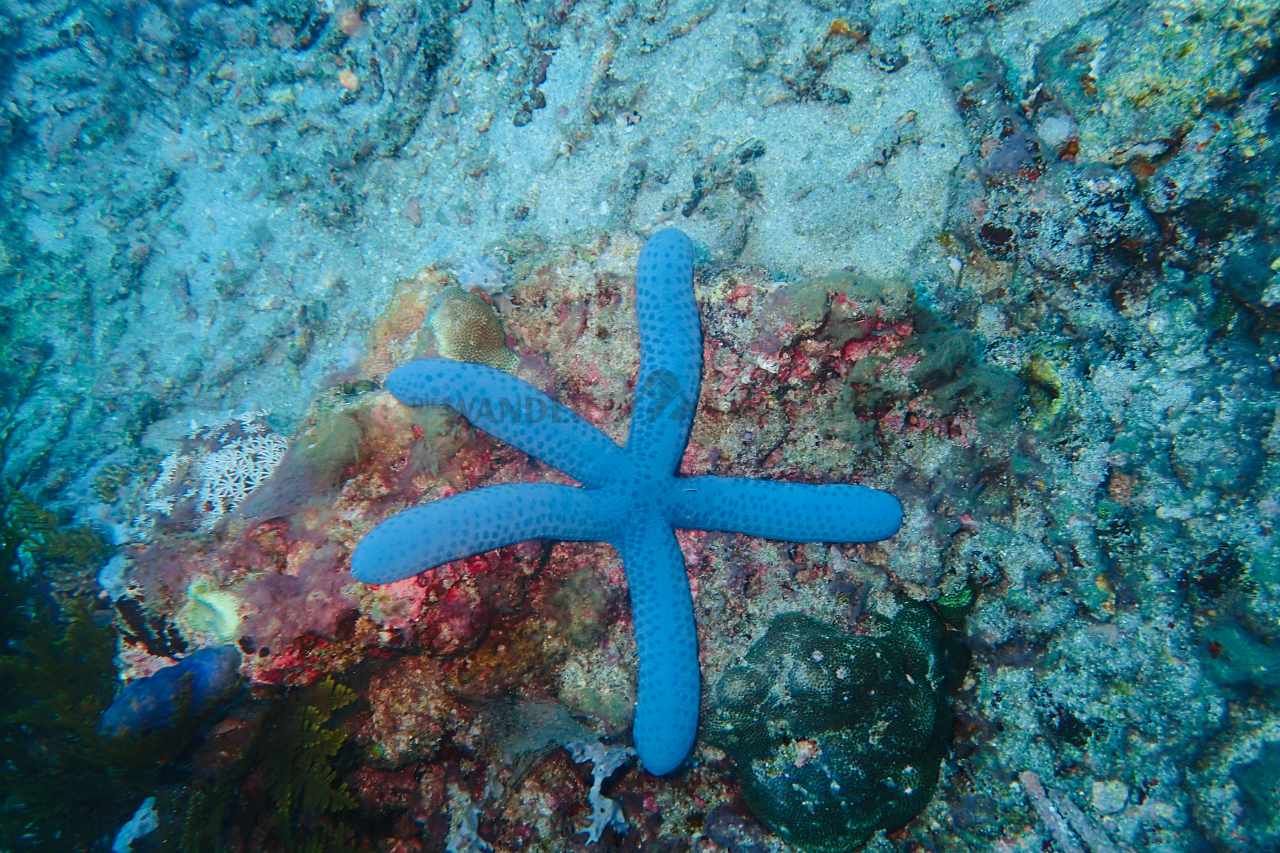
- Rutland Island
For those who thrive on underwater adventures, Rutland Island is the perfect destination. With its shallow waters, this island boasts a diverse array of small fish and corals. It is renowned for harboring some of India’s most exquisite underwater treasures.
Frequently visited by adrenaline junkies, Rutland Island is also an excellent place for diving training. Under the guidance of an instructor, you will receive a thorough briefing on equipment and safety measures. You will have time to acclimate to the equipment before embarking on a dive that will take you 39 feet deep into the ocean for approximately half an hour.
- Snake Island
Located just off Corbyn’s Cove in Port Blair, Snake Island is a small, uninhabited rocky islet. What sets this island apart is its unique and diverse range of flora and fauna. With an abundance of aquatic creatures, it is a popular spot for scuba enthusiasts.
The ideal time to visit is from December to May when the waters are calm and clear, providing the perfect conditions for an unforgettable scuba diving experience in the Andaman Islands.
Did you Know?
The Andaman Islands are also home to some unique and rare species, such as the dugong, a gentle sea mammal often referred to as the “sea cow”.
Scuba Diving Certifications
Scuba diving is a popular recreational activity that allows anyone to explore the underwater world and experience the beauty of marine life. However, if you get certified and pursue your diving education, it will not only ensure your safety, but also teach you the necessary skills and knowledge to enhance your diving experience.
PADI (Professional Association of Diving Instructors) is a leading organization in the recreational scuba diving industry. The largest and most recognized diving organization in the world, it offers a wide range of diving courses and certifications, from beginner level to professional level, for individuals who are passionate about exploring the underwater world.
Please note that before taking a PADI course, it is necessary to fill out a medical questionnaire and get a physician’s approval if there are any medical conditions that may affect your diving. It is important to disclose all medical conditions or medications that could potentially put the individual at risk while diving.
PADI (Professional Association of Diving Instructors) Courses For Beginners
- Discover Scuba Diving (DSD)
- Open Water Diver
- Scuba Diver
- Seal Team
- Bubblemaker Program
- Shore Diver
PADI Courses For Experienced Divers
- Advanced Open Water Course
- Emergency First Response
- ReActivate Scuba Refresher Program
- Rescue Diver
- Enriched Air (Nitrox) Diver Course
- Deep Diver Course
- Night Diver Course
- Wreck Diver Course
- Peak Performance Buoyancy Course
- Freediver Course
- Basic Freediver Course
- Assistant Instructor Course
- Divemaster Course
- Boat Diver Course
- Drift Diver Course
- Underwater Naturalist Course
- Digital Underwater Photographer Course
- Project Aware Course
- Master Freediver Course
- Skin Diver Course
- Underwater Navigator Course
- Emergency Oxygen Provider Course
- Specialty Instructor Course
- Master Instructor Course
- Master Scuba Diver Course
- Open Water Scuba Instructor Course
- Underwater Videographer Course
- Advanced Rebreather Diver
Did You Know?
The minimum age required for taking a PADI course is 10 years old for the Junior Open Water Diver course and 15 years old for the Open Water Diver course.
Cost Of Scuba Diving In The Andaman Islands
The cost of scuba diving in the Andamans can vary depending on the type of dive, duration, and location. On average, a single dive can cost anywhere from 4,500 to 6,000 INR per person. However, packages can also range from 10,000 to 20,000 INR for multiple dives and equipment rental. The cost may also include transportation to and from the dive site, as well as a guide or instructor. Overall, the cost of scuba diving in the Andaman Islands can range from 4,500 to 20,000 INR per person.
TWT Tip: It is important to research and compare prices between different dive operators before booking to get the best deal. Additionally, some operators may offer discounts for group bookings or during off-peak seasons.
Where Can You Book Your Scuba Diving Sessions In The Andamans?
Make sure that you book your dive with a PADI-certified dive center. Some of the most sought-after dive shops offering the best scuba diving in Andaman include the following:
Did you Know?
The maximum depth a recreational scuba diver can go is 130 feet, while a professional diver can go up to 300 feet.
Looking to dive with a PADI-certified instructor? Book your activity now!
Dos and Don’ts Of Scuba Diving In The Andaman Islands
Scuba diving in the Andaman Islands is a popular and exciting activity that allows you to explore the beautiful and diverse underwater world of the Indian Ocean. However, like any adventure sport, it is important to be aware of the dos and don’ts to ensure a safe and enjoyable experience.
The Andaman Islands are home to a variety of marine life and delicate ecosystems, and it is crucial to follow proper guidelines and regulations to preserve and protect them. Below are the dos and don’ts of scuba diving in the Andamans, so you can make the most out of your diving experience:
Dos
- Always dive with a certified and experienced dive instructor.
- Plan your dive and follow the dive plan.
- Check your equipment before every dive.
- Descend slowly and equalize your ears regularly.
- Monitor your air supply and surface if necessary.
- Follow proper buoyancy control to avoid damaging the coral reef.
- Keep a safe distance from any underwater structures or wrecks.
- Communicate regularly with your dive buddy and stay close to each other.
Don’ts
- Don’t dive if you are not feeling well or have any medical conditions that may affect your safety.
- Never hold your breath while scuba diving.
- Avoid touching or taking anything from the ocean, including shells or souvenirs.
- Do not chase or harass any marine animals.
- Do not dive deeper than your certification level.
- Don’t ignore any signs of discomfort or potential danger.
- Avoid diving in strong currents or rough weather conditions.
- Never dive alone.
- Do not consume alcohol before or during a dive.
- Don’t litter or leave any trash in the ocean.
Equipment Required For Scuba Diving
The following equipment is required for scuba diving:
- Scuba Diving Suit
- Scuba Diving Mask
- Fins
- Regulator
- Buoyancy Control Device
- Dive Computer
- Scuba Tank
- Weight System
Precautions To Take Before Scuba Diving
1. It is imperative to always dive with a buddy or in a group, not only for safety purposes but also to enhance the overall diving experience.
2. Make sure you are in good physical and mental health before diving. If you have any medical conditions, consult with your doctor before diving.
3. Proper hydration is important for scuba diving, as it can help prevent decompression sickness. Drink plenty of water before and after your dive.
4. Check the weather forecast before diving. Stormy or rough conditions can make diving dangerous, so it is best to avoid diving in these conditions.
5. It is important to know your own limits and not push yourself beyond what you are comfortable with. If you feel any discomfort or unease during the dive, communicate with your dive partner and end the dive if necessary.
6. Remember to follow responsible diving practices and respect marine life and their habitats. Do not touch or disturb any marine animals, and be mindful of your impact on the environment.
7. Scuba diving can be an exhilarating experience, but it is important to remain calm and relaxed. This will help conserve your air supply and prevent any panic or anxiety during the dive.
8. It is important to follow proper techniques when descending and ascending during a dive to avoid decompression sickness. Always ascend slowly and make safety stops as recommended by your dive instructor.
9. If you are diving with a professional instructor, make sure to listen to their instructions and follow their guidance. They are trained to ensure your safety and make your diving experience enjoyable.
TWT Experience Summary Of Scuba Diving In The Andamans
Scuba diving in the Andaman Islands is an experience like no other! Located in the Bay of Bengal, these islands are known for their crystal-clear waters, diverse marine life, and stunning coral reefs. Scuba diving enthusiasts from all over the world flock to the Andamans to explore its underwater wonders.
The islands offer a variety of dive sites suitable for both beginners and experienced divers. From shallow, calm waters to challenging deep dives, there is something for everyone. Divers can expect to encounter a wide range of marine life, including colorful fish, sea turtles, and even majestic manta rays.
Some of the best places for scuba diving in Andaman are Havelock Island and Neil Island, which are home to some of the most breathtaking coral gardens in the world, making them a must-visit for any diving enthusiast.
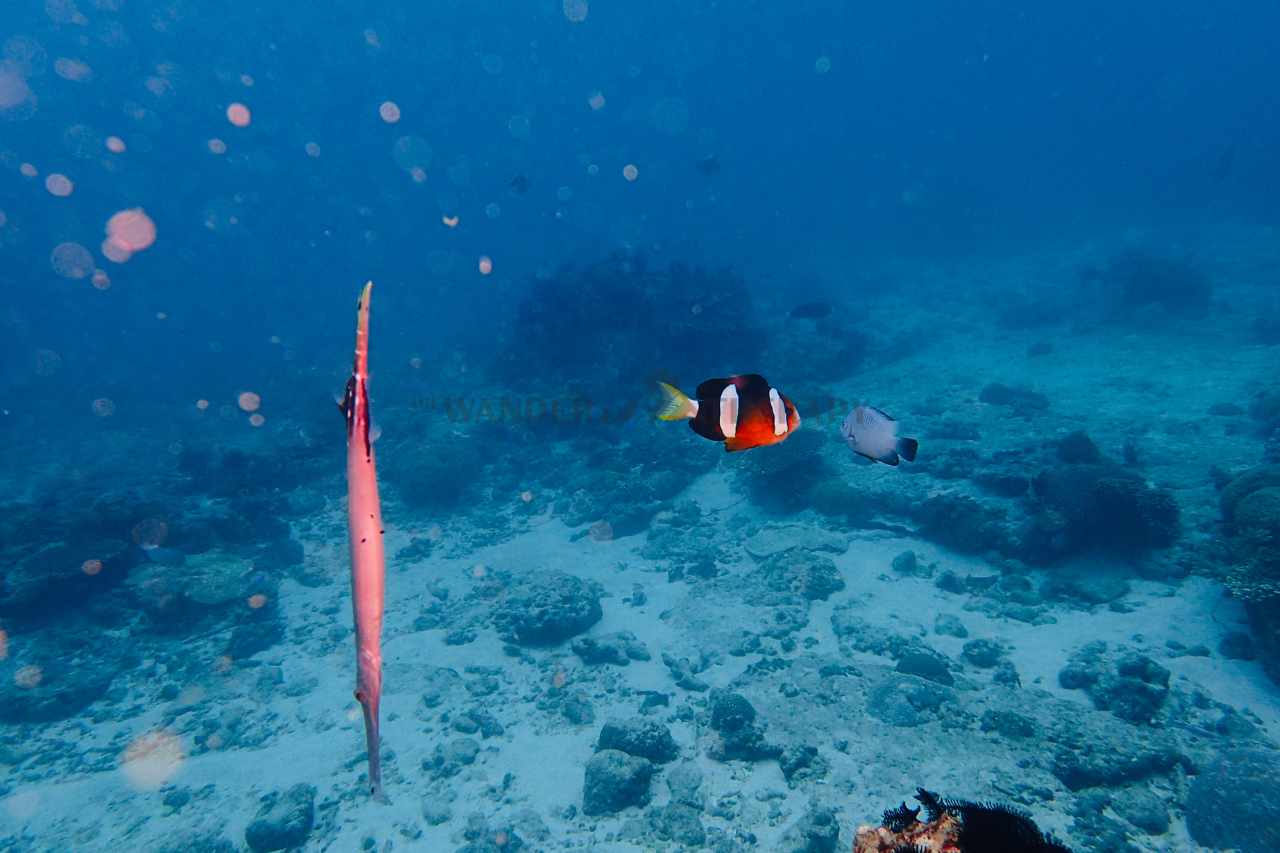
Frequently Asked Questions On Scuba Diving In The Andaman Islands
1. What is the most ideal time for scuba diving in the Andamans?
The best time for scuba diving in the Andamans is from October to May. During this time, the weather is dry and the sea is calm, providing optimal conditions for diving. The water temperature is also warmer, ranging from 26-30 degrees Celsius, making it comfortable for divers.
Additionally, this period also offers the best visibility, allowing divers to fully experience the vibrant marine life and colorful coral reefs of the Andaman Sea. It is important to note that scuba diving is not recommended during monsoon season (June to September) due to rough seas and poor visibility.
2. What is the minimum age requirement for scuba diving in the Andaman Islands?
You need to be 10 years old or above if you want to scuba dive in the Andamans.
3. How safe is scuba diving in Andaman?
Scuba diving in the Andamans is generally considered to be safe. The islands are located in the Bay of Bengal, which is known for its calm and clear waters, making it an ideal destination for diving. Additionally, the Andaman Islands have a well-developed diving infrastructure with experienced instructors and well-maintained equipment.
4. How many days are needed for scuba diving in Andaman?
If you are going for a fun dive, then it will take just half a day. On the other hand, if you are a beginner and want to take a diving course, then you will need at least 3-5 days. This includes theory classes, pool training, and open-water dives.
For certified divers, a minimum of 2-3 days is recommended to fully experience the diverse marine life and dive sites in Andaman. This will allow for at least 4-6 dives, depending on the duration of each dive.
5. Which are the most popular diving spots in the Andaman Islands?
Some of the best diving destinations offering the best scuba diving in Andaman are as follows:
- Havelock Island
- Neil Island
- North Button Island
- South Button Island
- Barren Island
- Cinque Island
- Red Skin Island
- Johnny’s Gorge
- Fish Rock
- Minerva Ledge
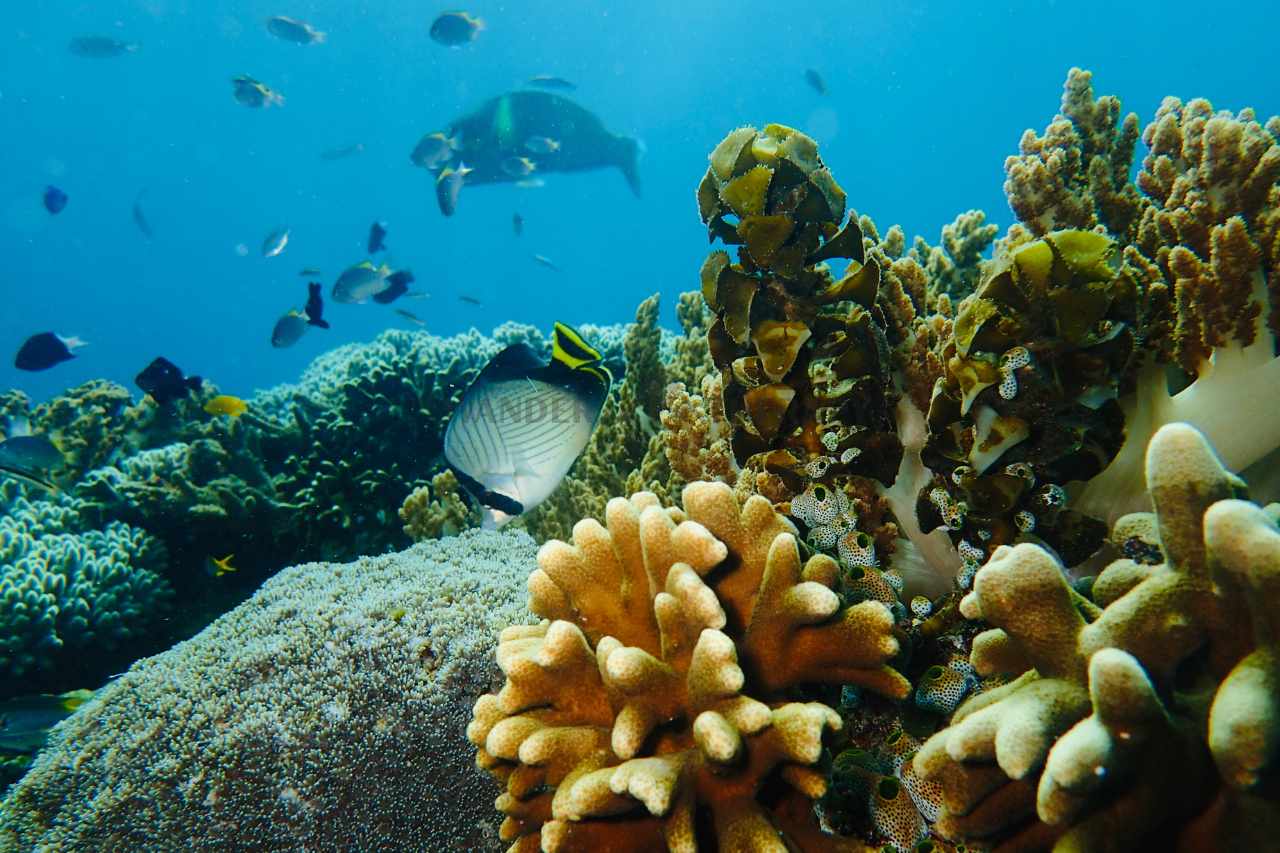
6. Is swimming a prerequisite for scuba diving in the Andamans?
Absolutely not! You don’t need to know how to swim to scuba dive. There are various options for shore diving and boat diving in the Andamans that are ideal for beginners as well as non-swimmers. However, it is crucial to listen attentively to your instructor’s instructions before embarking on the dive. Just follow him/her and you will be fine!
7. Is training necessary before scuba diving in Andaman?
No special training or course is required for scuba diving. However, there is a brief training session before you go for your dive wherein your instructor teaches you some basic underwater skills and signs that you need to keep in mind once you are under the surface. Just follow their instructions for a smooth dive.
8. Can you obtain scuba certification if you are capable of swimming?
Yes, you can get scuba certification if you know how to swim. Not mandatory for the first dive, but knowing how to swim helps you under the water. It is an important skill for safety while underwater. However, there are other requirements for scuba certification, such as passing a written exam and completing a certain number of open water dives.
9. Which are the best destinations in India and around the world for scuba diving?
Some of the best scuba diving places in India are:
- Andaman and Nicobar Islands
- Lakshadweep
- Goa
- Netrani Island, Karnataka
- Pondicherry
The best scuba diving places in the world are:
- Great Barrier Reef, Australia
- Maldives
- Bora Bora, French Polynesia
- Red Sea, Egypt
- Galapagos Islands, Ecuador
10. What is the cost of scuba diving in the Andaman Islands?
The cost of scuba diving in the Andaman Islands can vary depending on the diving company, location, and type of dive. On average, a single dive can cost anywhere from 4,500 to 6,000 INR. Some companies also offer packages that include multiple dives, which can range from 10,000 to 15,000 INR. Additional costs may also include equipment rental, certification fees, and transportation fees.
11. What is the duration of a scuba diving session?
The duration of a diving session can vary depending on the type of diving, the depth of the dive, and individual factors such as experience and air consumption. However, a standard recreational dive typically lasts between 40 minutes to an hour. It is important to always follow the recommended dive time limits and never exceed your personal limits or those set by your dive instructor.
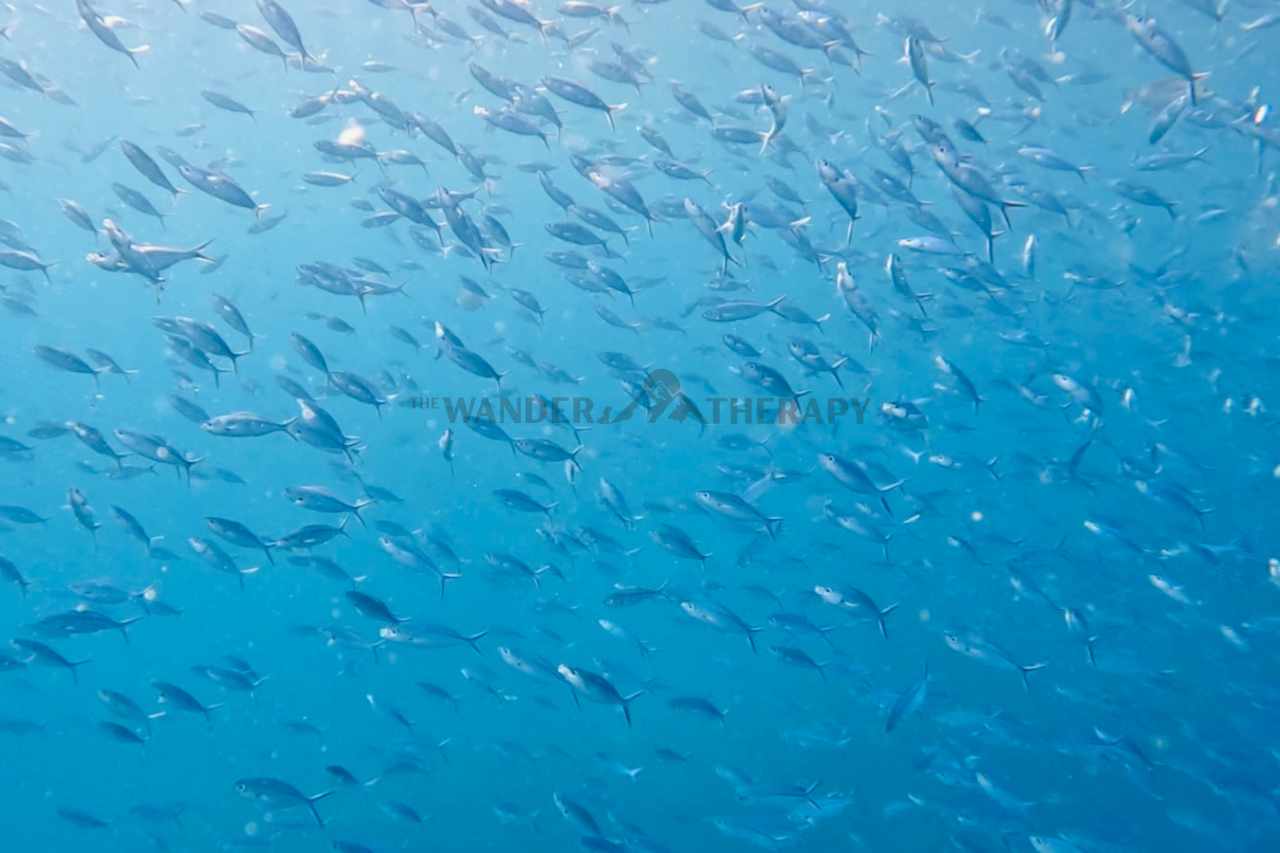
12. Are there any medical conditions that may prevent someone from scuba diving?
Yes, there are certain medical conditions that can prevent someone from scuba diving. These include:
- Heart or lung conditions
- Respiratory diseases
- Ear and sinus problems
- Seizure disorders
- Pregnancy
- Recent surgeries
It is important to always consult with a qualified medical professional before participating in scuba diving and to disclose any medical conditions or concerns.
13. Is it possible to scuba dive with poor eyesight?
Yes, you can still scuba dive if you have poor eyesight. However, it is recommended to wear corrective lenses or contact lenses to improve visibility underwater.
14. Is it safe to fly after scuba diving?
No, it is not recommended to fly after scuba diving. It is important to wait at least 18-24 hours after your last dive before flying. This is because scuba diving can cause nitrogen to build up in your body tissues, and flying can cause changes in air pressure which can lead to decompression sickness. It is important to follow these guidelines to ensure your safety and avoid potential health risks.
15. Is scuba diving in the Andaman Islands suitable for beginners?
The Andaman Islands have shallow dive sites with calm waters, which are ideal for beginners to practice and gain confidence before venturing into deeper waters. These sites also offer a chance to see a variety of colorful fish, corals, and other marine life, providing a memorable experience for beginners.
Moreover, the diving centers in the Andaman Islands have experienced and certified instructors who can guide beginners throughout the diving process, ensuring their safety and enjoyment. They also provide all necessary equipment and follow strict safety protocols to ensure a safe and enjoyable diving experience for beginners.
16. Can non-swimmers try snorkeling in the Andaman and Nicobar Islands?
Yes, non-swimmers can try snorkeling in the Andaman and Nicobar Islands. Snorkeling does not require advanced swimming skills, but it is recommended that non-swimmers wear a life jacket and stay close to the shore or a guide at all times. It is important to follow all safety instructions and guidelines provided by the instructor. Additionally, there are also options for guided snorkeling tours where non-swimmers can hold onto a floating board while exploring the underwater world.
17. What distinguishes snorkeling from scuba diving?
One of the main differences between snorkeling and scuba diving is the equipment used. Snorkeling requires minimal gear, usually just a snorkel (a breathing tube) and a pair of fins. On the other hand, scuba diving requires a lot more equipment, including a diving mask, fins, a buoyancy control device, a regulator, and a tank of compressed air.
Another significant difference between snorkeling and scuba diving is the depth at which the activities take place. Snorkeling is typically done near the surface of the water, while scuba diving allows for deeper exploration, sometimes up to 40 meters or more.
In snorkeling, the person breathes through the snorkel tube, which limits the time spent underwater as they need to resurface to breathe fresh air. In scuba diving, the person uses a regulator attached to the air tank, allowing for continuous breathing while underwater.
Due to the limitations of breathing through a snorkel, the duration of a snorkeling session is usually shorter compared to scuba diving. Scuba divers can typically stay underwater for longer periods, depending on the depth and air supply.
Book your stay in the Andaman Islands here!
View this post on Instagram
Frequent Traveler? Here’S Some More Travel Goodness From Us:

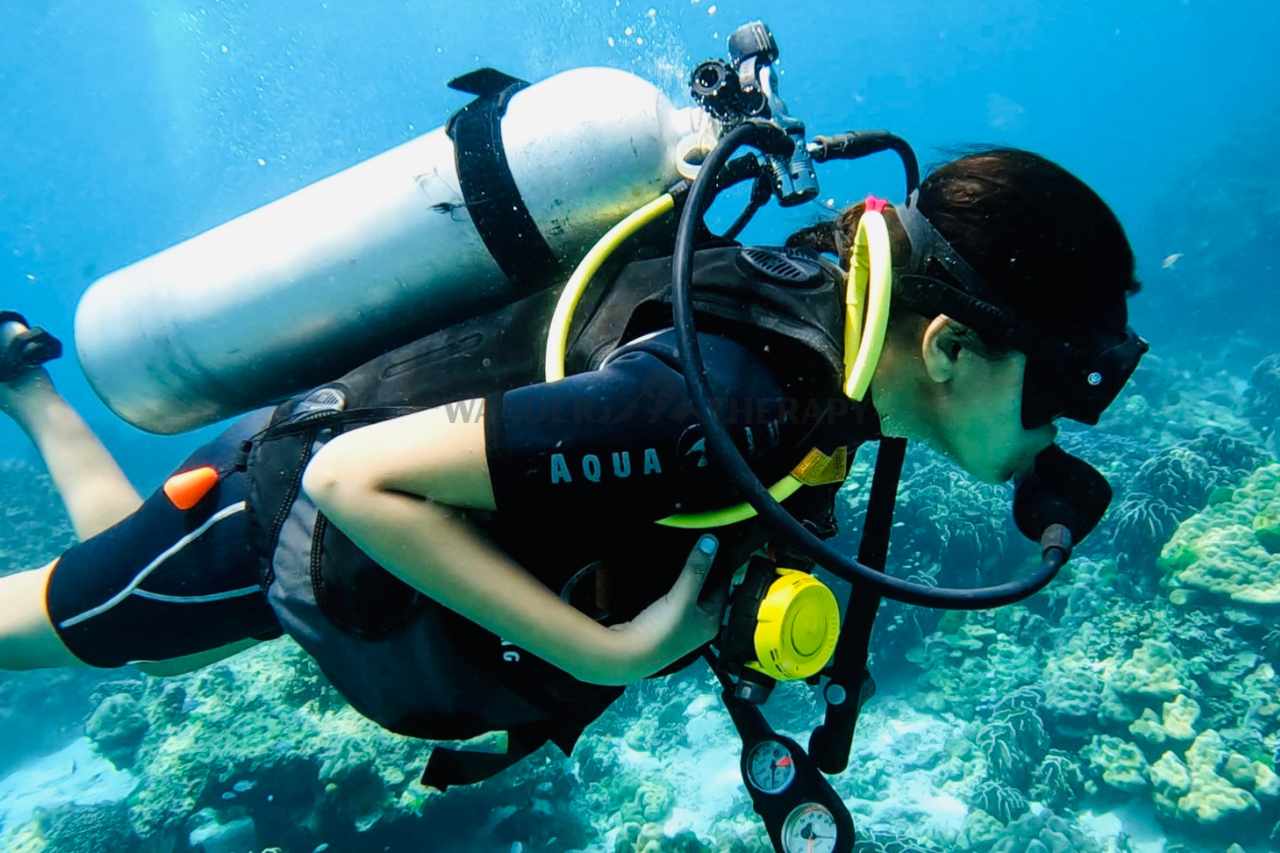
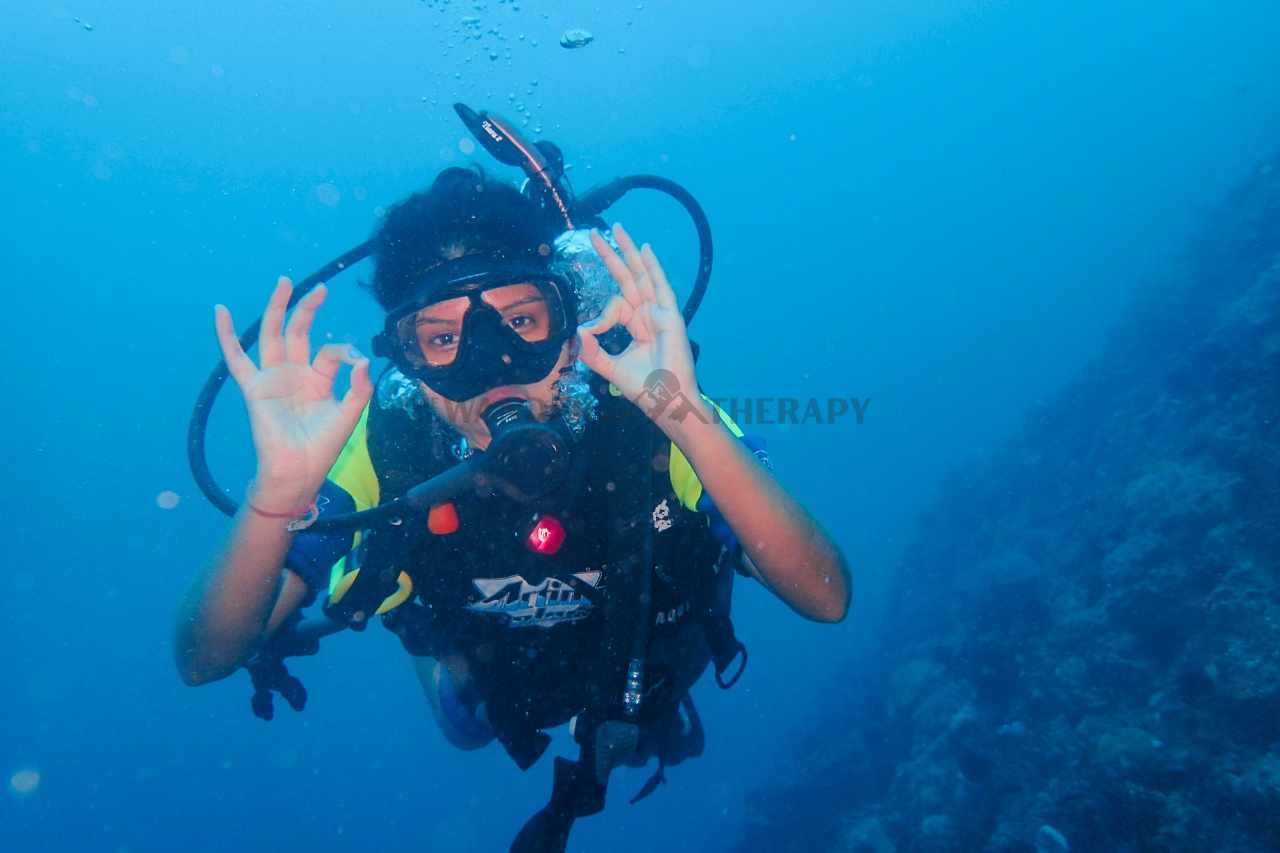
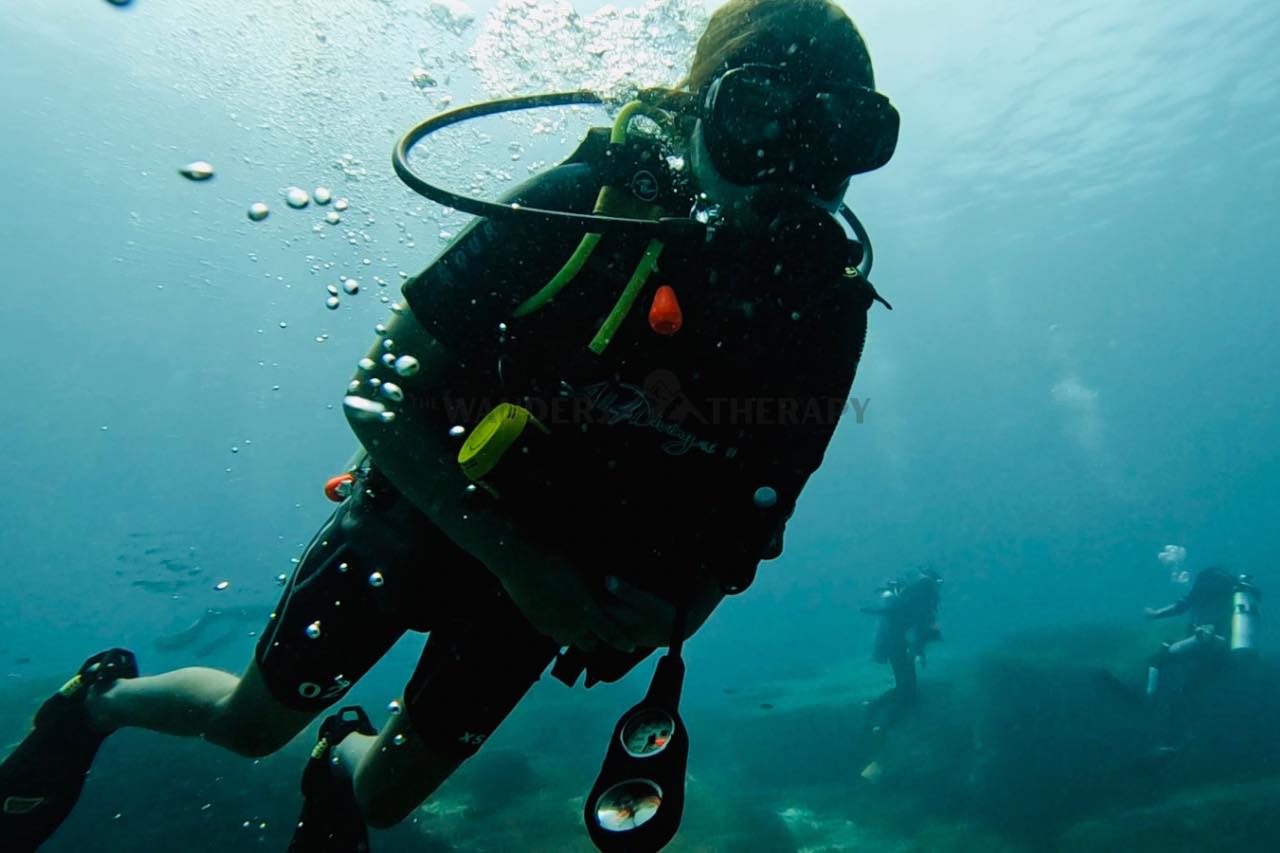

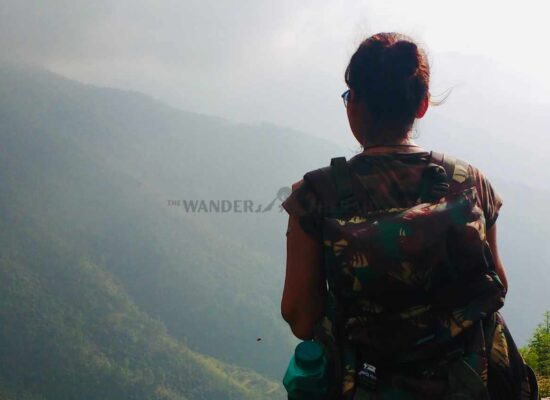
2 thoughts on “Scuba Diving In Andaman: Best Places, Prices, Certification & Precautions ”
WOW. What an adventurous article. More importantly it is experienced
by yourself. Really useful information for people who love adventure and excitement.
Thank you very much for taking the time to leave your valuable feedback on our content. 🙂